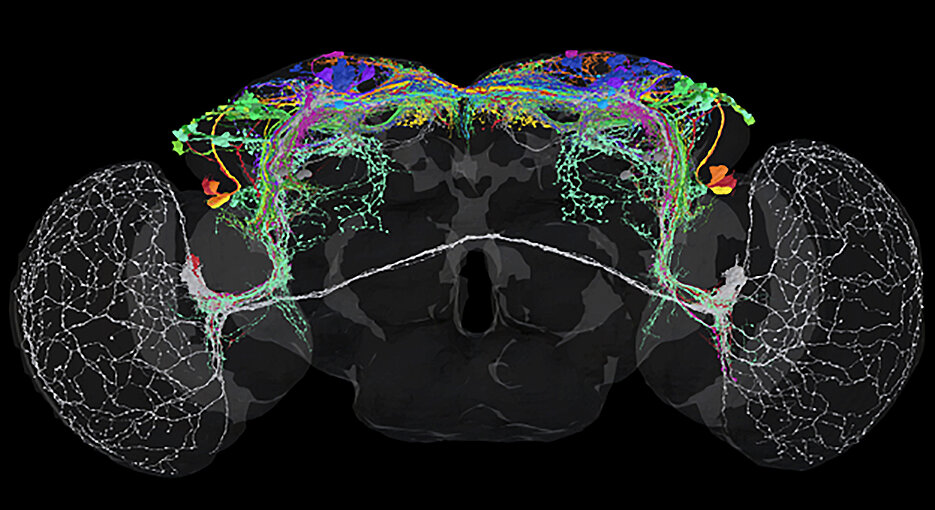Circadian clocks control physiological processes and behavior in virtually all living organisms. Now an international research team led by researchers from the University of Würzburg has created a detailed map of the internal clock in the brain of the fruit fly.

All animals including humans are subject to daily rhythms in their activity and sleep, hunger, metabolism, and reproduction. The system that regulates these biological rhythms is known as the circadian clock. It controls all processes in the body within a 24-hour period.
In vertebrates, the "master" clock is found in the brain in an area called the suprachiasmatic nucleus (SCN). This brain region is responsible for regulating and synchronizing rhythms not only in the brain but also governs other clocks in tissues throughout the body. It is important that our bodily rhythms function in a coordinated manner, otherwise disruptions to this system can result in sleep and metabolic disorders.
New paper in Nature Communications
In a study now published in the journal Nature Communications, a team of researchers from the University of Würzburg (Germany), the University of Nevada, Reno (USA), and Okayama University (Japan) has created the first complete map of the circadian clock in the brain of the fly Drosophila. Dr. Meet Zandawala, Group Leader, and Nils Reinhard, PhD student (lab of Charlotte Förster and Dirk Rieger) in the Department of Neurobiology and Genetics at the University of Würzburg, took the lead on this work.
"In vertebrates, there are approximately 20,000 neurons that make up the master clock. Given this large number of cells, and how many connections they form within the brain, understanding the interactions and the functioning of the clock network is complicated," explains Meet Zandawala as the rationale for pursuing this research project in the fly. To address such complexity on a smaller scale, scientists use model organisms whose brains have been mapped, such as the fly, with about 140,000 neurons.
A map of all connections in the fly brain
For Drosophila, an international research consortium has recently published a map of all connections between all neurons in the fly brain - the so-called connectome. "This open-access resource provides tools for new discoveries in neuroscience, and specifically in advancing our understanding of mechanisms such as the circadian clock", says Zandawala.
Together, the team has now used this brain connectome to find all the neurons that make up the circadian clock of a fly. The result: "The circadian clock in the Drosophila brain consists of at least 240 neurons, which is significantly more than the originally estimated 150. Some of the newly identified clock neurons also show characteristics that were originally only known from clock neurons in vertebrates. This means that the mechanisms of the clock are much more similar between vertebrates and insects than previously assumed", says Nils Reinhard. The availability of this comprehensive dataset enabled the researchers to further identify specific types of clock neurons that function together and coordinate communication within the clock network.
Basis for future therapeutic approaches
Neurons in the clock network pass the time information to other brain regions that support learning and memory, navigation, motor control, and hormone production and release. Having established the clock network, researchers can now trace these pathways to determine how rhythmic behaviors such as feeding, sleep, and reproduction, as well as hormone release are coordinated.
This detailed mapping of the Drosophila clock network not only expands our understanding of how daily rhythms are generated but also provides a foundation for exploring circadian dysregulation linked to health conditions such as sleep disorders and metabolic diseases. "These results give us a detailed framework to understand how the brain controls daily cycles. They provide the basis for future therapeutic approaches to treat circadian health problems," says Zandawala.
Original Publication
Synaptic connectome of the Drosophila circadian clock. Nils Reinhard, Ayumi Fukuda, Giulia Manoli, Emilia Derksen, Aika Saito, Gabriel Möller, Manabu Sekiguchi, Dirk Rieger, Charlotte Helfrich-Förster, Taishi Yoshii, Meet Zandawala. Nature Communications, DOI: 10.1038/s41467-024-54694-0






